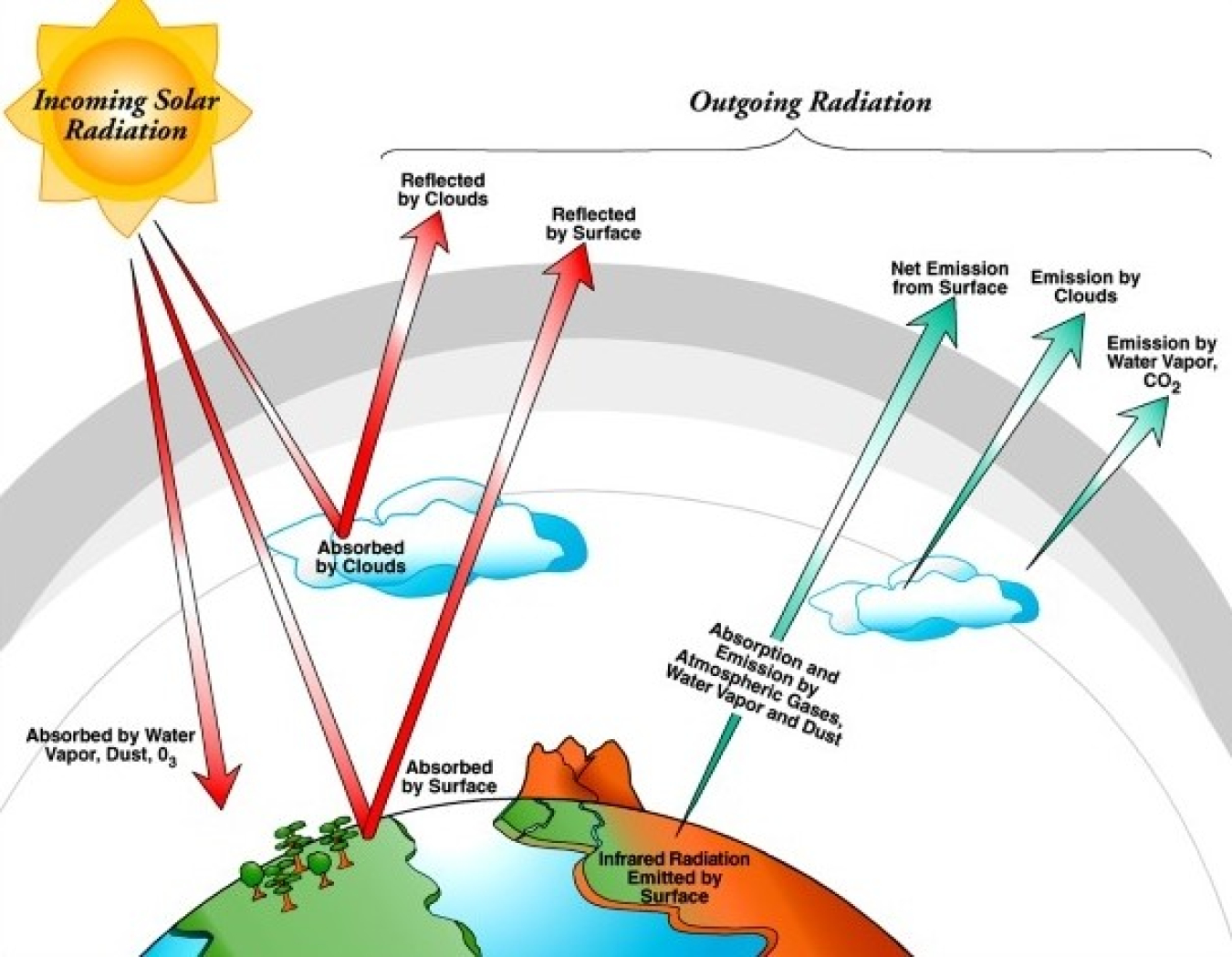Solar radiation, Heat Budget, and Temperature are fundamental concepts in understanding the dynamics of Earth’s climate and energy balance. In this article, we delve into the intricate relationship between these factors, exploring their significance, mechanisms, and implications.
1. Introduction to Solar Radiation
Solar radiation, often referred to as sunlight, is the primary source of energy for Earth’s climate system. It encompasses a broad spectrum of electromagnetic waves emitted by the sun, including visible light, infrared, and ultraviolet radiation. Upon reaching Earth’s atmosphere, solar radiation undergoes various processes, such as absorption, reflection, and scattering.

2. Understanding the Heat Budget
The heat budget of Earth refers to the balance between incoming solar radiation and outgoing terrestrial radiation. It is governed by intricate interactions between the atmosphere, oceans, land surfaces, and living organisms. Understanding the heat budget is crucial for comprehending the distribution of energy across the planet and its influence on climate patterns.

2.1 Solar Radiation Intensity

The intensity of solar radiation varies with factors such as the angle of incidence, atmospheric conditions, and geographic location. Regions closer to the equator receive more direct sunlight throughout the year, leading to higher temperatures compared to polar regions.
2.2 Latitude and Seasonal Variation
Latitude plays a significant role in determining the amount of solar radiation received by a particular region. Areas near the equator experience minimal seasonal variation in solar radiation, while those closer to the poles undergo significant changes due to Earth’s axial tilt.
2.3 Altitude
Altitude affects solar radiation by influencing atmospheric conditions and the thickness of the atmosphere through which sunlight must pass. Higher altitudes typically receive more intense solar radiation due to reduced atmospheric absorption.
2.4 Land and Water Distribution
The distribution of land and water on Earth’s surface also affects the absorption and reflection of solar radiation. Water bodies tend to absorb and retain heat more effectively than land, leading to differences in temperature patterns between coastal and inland regions.
3. Factors Influencing Temperature

Temperature, a measure of the average kinetic energy of particles in a substance, is influenced by various factors, including solar radiation, atmospheric composition, and surface characteristics.
3.1 Solar Radiation Intensity
The intensity of solar radiation directly affects surface temperatures, with higher levels of insolation leading to increased heating. The angle of incidence and duration of daylight hours also contribute to temperature variations.
3.2 Latitude and Seasonal Variation
Latitude influences temperature by determining the angle at which solar radiation strikes Earth’s surface. Regions near the equator experience warmer temperatures year-round, while those closer to the poles undergo seasonal changes due to variations in solar insolation.
3.3 Altitude
Altitude has a significant impact on temperature, with lower atmospheric pressures at higher elevations leading to lower temperatures. This phenomenon, known as the lapse rate, results in cooler conditions in mountainous regions compared to low-lying areas.
3.4 Land and Water Distribution
The presence of water bodies moderates temperature extremes by absorbing and releasing heat more slowly than land surfaces. Coastal areas experience milder climates due to the buffering effect of oceans, while continental interiors exhibit greater temperature variability.
4. Solar Radiation and Terrestrial Radiation
Solar radiation absorbed by Earth’s surface is re-emitted as terrestrial radiation in the form of infrared heat. This process plays a crucial role in maintaining Earth’s energy balance and regulating surface temperatures.
5. The Greenhouse Effect
The greenhouse effect refers to the trapping of heat within Earth’s atmosphere by greenhouse gases such as carbon dioxide, methane, and water vapor. While essential for maintaining habitable conditions, human activities have intensified the greenhouse effect, leading to global warming and climate change.
6. Impact of Solar Radiation on Climate Change
Solar radiation plays a central role in driving climate change through its influence on Earth’s energy balance and atmospheric dynamics. Changes in solar irradiance, combined with human-induced factors such as greenhouse gas emissions, contribute to shifts in global temperature patterns and weather extremes.
7. Measurement of Solar Radiation
Various instruments, including pyranometers and spectrophotometers, are used to measure solar radiation at the Earth’s surface and within the atmosphere. These measurements are essential for understanding climate variability and assessing renewable energy potential.
8. Techniques to Harness Solar Energy
Advancements in solar technology have enabled the widespread adoption of photovoltaic cells and solar thermal systems for electricity generation and heating applications. Harnessing solar energy offers a sustainable alternative to fossil fuels, reducing greenhouse gas emissions and mitigating climate change.
9. Solar Radiation in Various Geographic Regions
Solar radiation exhibits spatial variability due to differences in atmospheric conditions, cloud cover, and surface characteristics. Understanding regional variations in solar insolation is crucial for optimizing solar energy systems and predicting climate trends.
10. Human Impacts on Solar Radiation
Human activities, such as urbanization, deforestation, and industrialization, can alter patterns of solar radiation by modifying land surfaces and atmospheric composition. These changes have implications for both local microclimates and global climate dynamics.
Conclusion
Solar radiation, heat budget, and temperature are interconnected components of Earth’s climate system, influencing weather patterns, ecosystems, and human societies. By understanding the mechanisms driving solar energy fluxes and temperature variations, we can better address the challenges of climate change and transition towards a more sustainable future.
FAQs
- How does solar radiation contribute to global warming? Solar radiation contributes to global warming by driving the greenhouse effect, which traps heat within Earth’s atmosphere and raises surface temperatures.
- What are the main sources of terrestrial radiation? Terrestrial radiation primarily originates from the absorption and re-emission of solar radiation by Earth’s surface, as well as from heat released by human activities and natural processes.
- How do scientists measure solar radiation? Scientists use instruments such as pyranometers and spectrophotometers to measure solar radiation at the Earth’s surface and within the atmosphere, providing valuable data for climate research and renewable energy assessments.
- What role does altitude play in temperature variations? Altitude influences temperature variations by affecting atmospheric pressure and the lapse rate, resulting in cooler conditions at higher elevations due to reduced air density.
- How can solar energy be harnessed for sustainable development? Solar energy can be harnessed through photovoltaic cells and solar thermal systems to generate electricity, heat water, and provide space heating, offering a clean and renewable alternative to fossil fuels.

too good
short and crisp
over all too good
Superb post however , I was wanting to know if you could write a litte more on this subject?
I’d be very thankful if you could elaborate a little bit further.
Thank you!
It’s remarkable for me to have a website, which is beneficial for my
experience. thanks admin